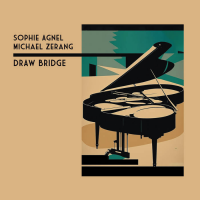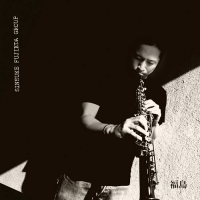Home » Jazz Articles » Album Review » Badenya: Badenya: Manden Jaliya in New York City
Badenya: Badenya: Manden Jaliya in New York City
With that said, Badenya is all about the new meaning of traditional West African music in the context of modern New York City. Badenya is a Malinke word referring to the bond between mother and child, but it also encompasses a more general sense of community and tradition. In this way it conveys many meanings. During the '70s a West African community began to coalesce in New York City, drawing its members from Mali, Senegal, Guinea, and other countries. These people kept their jaliya traditions, but in the New World context they also assimilated other approaches to sound. What resulted is a brilliant fusion, documented here on a recording by master players still deeply immersed in their heritage.
What stands out most dramatically on this recording is the near-total lack of drums. Instead, the group relies on the kora (a harp-like string instrument) and bala (like a xylophone) to weave together a net-like foundation. With this approach, rhythm becomes inextricably bound to harmony. While the harmonies might not be particularly sophisticated from a jazz perspective, they convey a crystalline beauty in their straightforward simplicity. And rather than following the extended forms common to traditional West African music, the group mostly simplifies matters to the 4/4 time signature found in most Western music. Rather than featuring instrumental solos, the music focuses on group cohesion and the sort of interplay that seasoned masters evoke through subtlety and an experienced ear.
In every case, the vocals shine—they are, in fact, the point of the music. While the language will without exception be unintelligible to English speakers, the phrasing, lyricism, and spirit speak volumes. Kindly enough, the folks at Smithsonian Folkways have supplied both African and English lyrics. On "Nanfulen," for example, the point is crystal clear: "Your ancestors have sacrificed for you / so that good things will come to you."
In the end, Badenya is true to its name. It's a musical statement which blends new and old traditions, aimimg for a spirit of celebration and enlightenment—and it never overstates itself. Like any deep spiritual music, it's best appreciated when you surrender your preconceptions in order to listen at a deeper level. If you can do that, this is as deep as it gets.
Visit Smithsonian Folkways and CTMD on the web.
Track Listing
Fakoli; Jigiya; Kinzan; Nanfullen; Janjon; Sidi Yellah; Sori Kemedon; Keme Burema; Allah L'A Ke; Diniya; Djiu De Galinha.
Personnel
Abdoulaye Diabate: vocals; Abou Sylla: bala; Keba Bobo Cissoko: kora, vocals; Adjaratou "Tapani" Sissoko: vocals; Mahamadou Salieu Suso: kora, vocals; Bah Bailo: tambin; Famoro Diabate: bala.
Album information
Title: Badenya: Manden Jaliya in New York City | Year Released: 2002 | Record Label: Smithsonian Folkways Recordings
Tags
PREVIOUS / NEXT
Support All About Jazz
 All About Jazz has been a pillar of jazz since 1995, championing it as an art form and, more importantly, supporting the musicians who make it. Our enduring commitment has made "AAJ" one of the most culturally important websites of its kind, read by hundreds of thousands of fans, musicians and industry figures every month.
All About Jazz has been a pillar of jazz since 1995, championing it as an art form and, more importantly, supporting the musicians who make it. Our enduring commitment has made "AAJ" one of the most culturally important websites of its kind, read by hundreds of thousands of fans, musicians and industry figures every month.



















